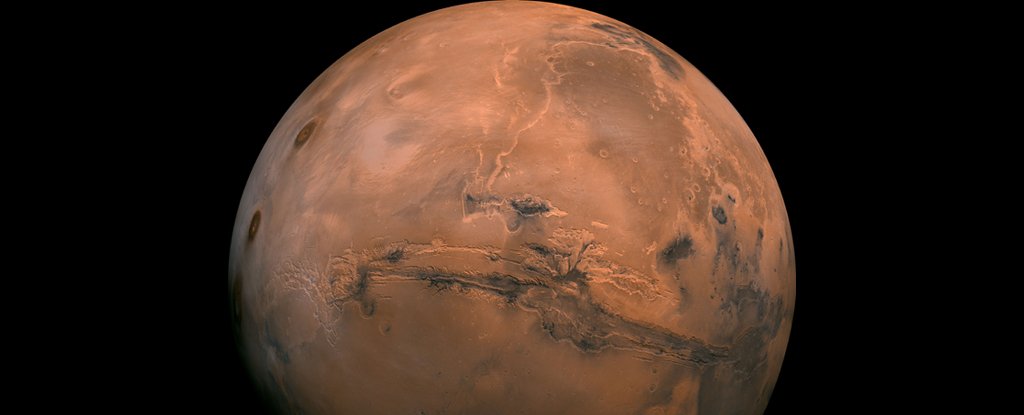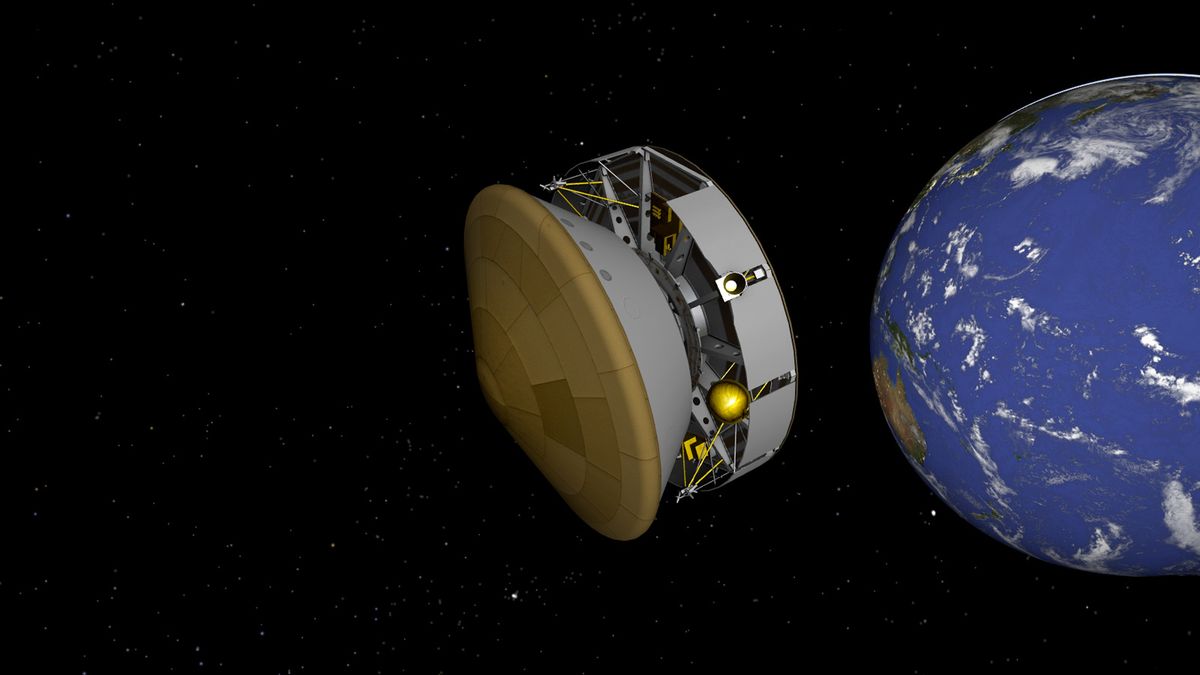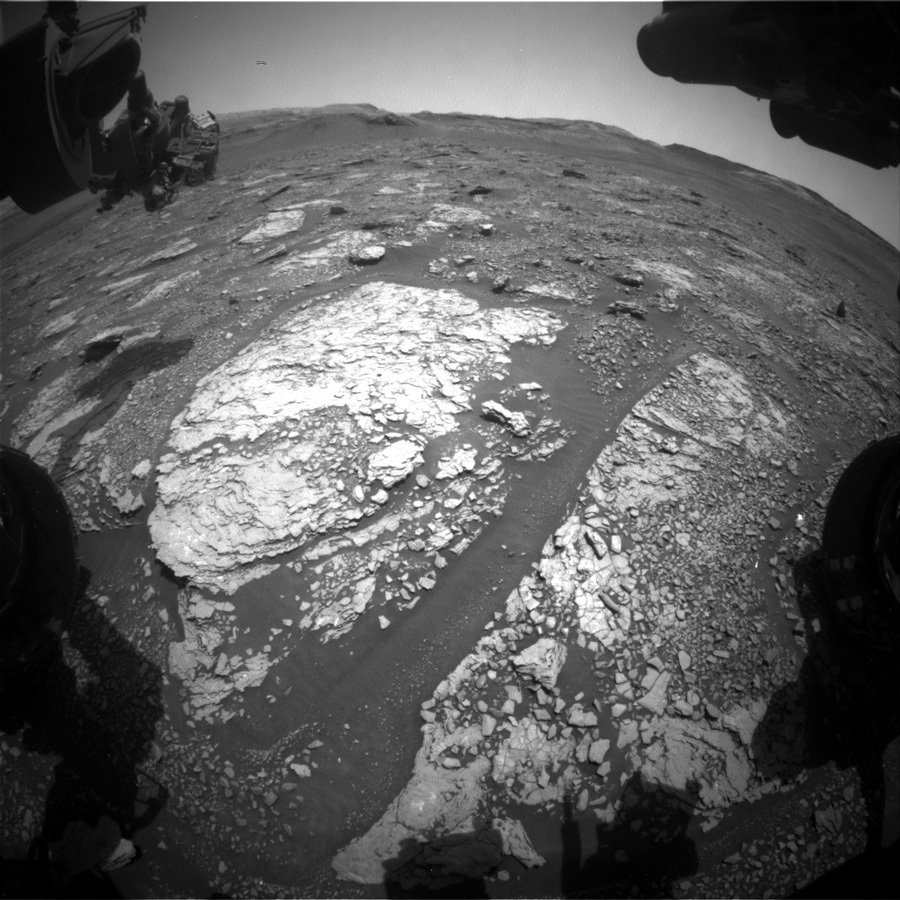
Mars , our second closest cosmic cousin, has been in our collective imagination for decades. Between fantasies of martian visits and the promise of water under its icy surface , Mars doesn't need to do much to be in our collective good books.
But very soon, Mars is not just going to be close to our hearts, but also nearest to our actual planet - a mere 62.1 million kilometres (38.6 million miles) away from Earth.
This is the closest it'll be for the next 15 years. And it means that stargazing is highly recommended as Mars will be bright, big and easy to see with or without a telescope.
Check out this next:
Water on Mars: discovery of three buried lakes intrigues scientists

Scientists have long thought that there could be water trapped beneath the surface of Mars. Credit: Steve Lee, Univ. Colorado/Jim Bell, Cornell Univ./Mike Wolff, SSI/NASA
Two years ago, planetary scientists reported the discovery of a large saltwater lake under the ice at Mars's south pole, a finding that was met with excitement and some scepticism. Now, researchers have confirmed the presence of that lake — and found three more.
"We identified the same body of water, but we also found three other bodies of water around the main one," says planetary scientist Elena Pettinelli at the University of Rome, who is one of the paper's co-authors. "It's a complex system."
You can track NASA's 2020 Mars rover Perseverance on its journey to the Red Planet | Space

You can follow NASA's Mars 2020 Perseverance rover in real time as it makes its way to the Red Planet.
The interactive NASA web application Eyes on the Solar System shows you where Perseverance is as the rover travels millions of miles over the next few months. The rover, which launched on July 30, is scheduled to touch down inside Mars' Jezero Crater on Feb. 18, 2021.
* * *
"Eyes on the Solar System visualizes the same trajectory data that the navigation team uses to plot Perseverance's course to Mars," Fernando Abilleira, the Mars 2020 mission design and navigation manager at NASA's Jet Propulsion Laboratory (JPL) in Southern California, said in a statement . "If you want to follow along with us on our journey, that's the place to be."
Sols 2901-2903: Warts and All! – NASA's Mars Exploration Program

The first order of business for this three-sol plan is to continue with arm diagnostic activities that could give Curiosity the all clear to bump to the next drill target at this location in the coming week. This still leaves plenty of time, power and data volume to plan a number of science activities.
Finally, there is a CheMin empty cell and clean up activity on the last sol, in preparation for our next drill campaign. Standard REMS, RAD and DAN passive and active measurements are also planned.
Were you following this:
Japan′s Mars moons mission leads to human spaceflight | Science| In-depth reporting on science

A Japanese mission called Martian Moons eXploration aims to be the first to bring back rocks from the Mars region. It could also help humans land on Phobos.
* * *
Japan's Martian Moons eXploration (MMX) mission aims to probe and observe Mars' two moons, Phobos and Deimos, collect surface material, and return them to Earth.
MMX is scheduled to launch in 2024 and bring back rocks and other samples, possibly from Phobos, the larger of the two moons, five years later in 2029.
NASA Looks to Advance Large-Scale 3D Printing for the Moon and Mars | NASA
Lake County News,California | Award winning, independent local news - Space News: NASA's new Mars

Happening on Twitter
#Mars makes its closest approach to Earth next week & opposition the week after, making for some great viewing oppo… https://t.co/AWZLJoFBFR esascience (from Noordwijk, The Netherlands) Sat Oct 03 15:44:01 +0000 2020
Many of you saw the Mars/Moon conjuction last night. Well now, you're really going to get a close look at the Red P… https://t.co/uXEgmAIatg TonyPannWBAL (from Baltimore, MD) Sat Oct 03 13:43:21 +0000 2020
No comments:
Post a Comment